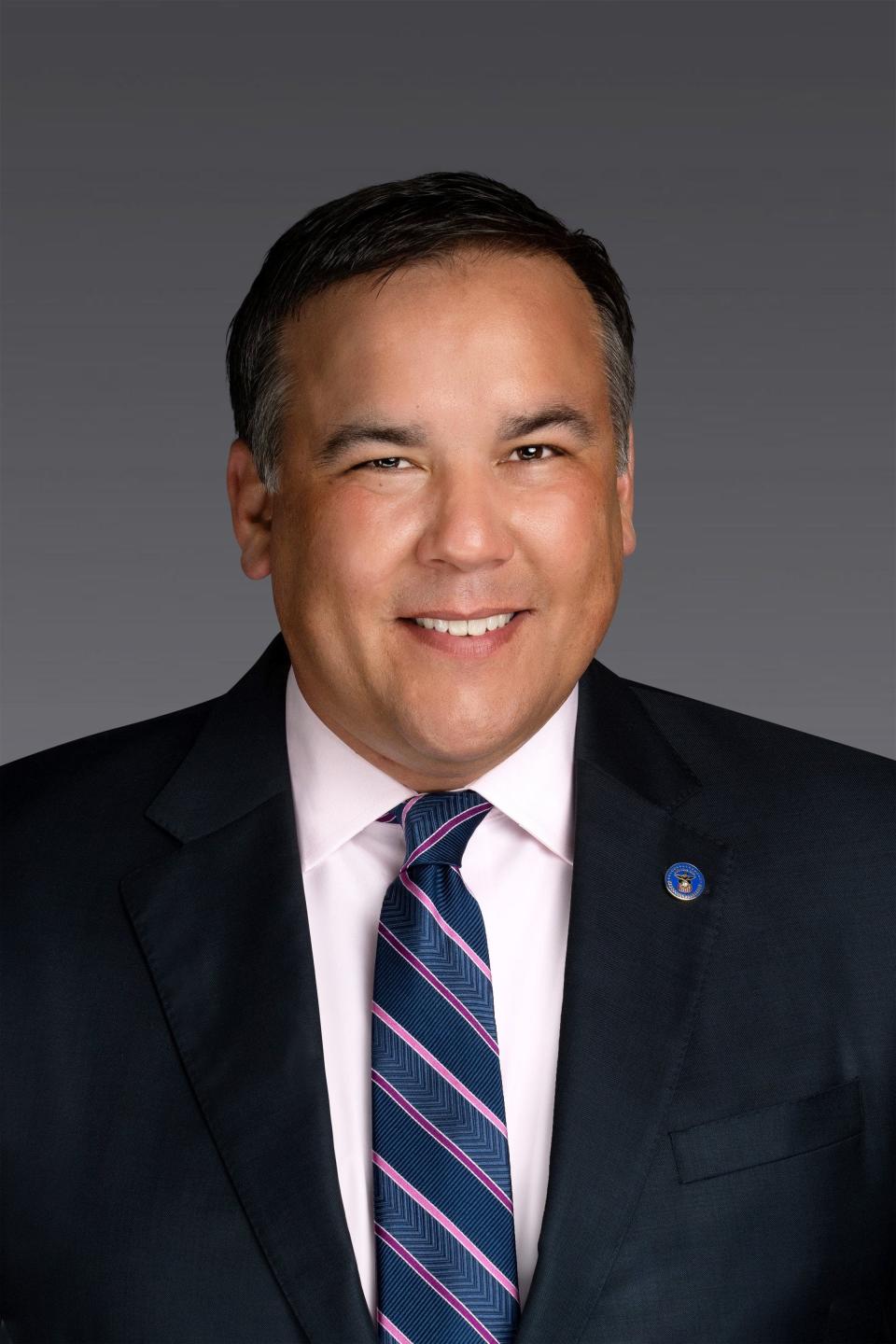Columbus Mayor Andrew Ginther gave his State of the City address. Here are the highlights
Columbus Mayor Andrew J. Ginther on Tuesday evening outlined his vision for Ohio's largest city and priorities for his third term: public safety; inclusive, affordable neighborhoods; and an expanded, equitable and affordable transportation system.
Here are the highlights from the mayor's prepared remarks for his State of the City address:
Using cameras to expand Downtown security
The mayor discussed a plan to allow police to connect to a network of hundreds of privately owned Downtown security cameras to monitor city streets and potentially inside areas of properties by 2025 in a bid to fight crime.
"These cameras show what’s happening as events are unfolding, before our cruisers arrive at the scene, and this intel has proven invaluable in achieving the best possible use of our officers' time and delivering the best possibleresults for our residents," the mayor told a crowd of more than 100 people at the Lincoln Theatre in the historic King-Lincoln Bronzeville neighborhood.

"From identifying and tracking suspects and the vehicles they use to commit crimes to locating missing persons whose whereabouts are unknown, we’re already seeing signs of tremendous success, and we’re excited to take this work to the next level," he said.
Mayor pushes for moving away from auto dependence
Ginther also hit on familiar themes such as growth and the ongoing zoning overhaul.
"For nearly 100 years, the growth of our city has been centered around the automobile — which paved the way for a car-centric transportation system," Ginther said.
He questioned if that would be sustainable, especially with 1 million new residents projected to live in the region over the next 25 years.
"Does anyone want to see a million more cars on the road?" he asked.
Zoning plan tied to LinkUS transit effort
The mayor cited his expansion of tax abatements from certain neighborhoods in need of modern housing options to the entire city earlier this year. In discussing the expansion of tax-abated properties, he said: "Everybody needs to do their fair share."
The city's proposed new zoning plan calls for packing taller buildings, many presumably tax-abated, than is currently allowed along major transportation corridors and eliminating expensive off-street parking requirements for developers. The hope is that residents will forego cars and use public transportation, such as the planned "LinkUS" comprehensive transportation plan.
"It’ll create a new, improved and affordable mobility system across central Ohio by installing at least five 'rapid transit lines' starting along West Broad, East Main and Olentangy River Road – some of our major growth corridors," Ginther said. "Bus Rapid Transit – or BRT, for short – offers an experience that feels like light rail, moves as quickly as light rail, and can be up to seven times less expensive to build when you look at the cost-per-mile."
Crime Gun Intelligence Center improving safety
As he did during his successful reelection campaign last year, Ginther highlighted public safety as a major concern and top priority. He noted that homicides in Columbus year-to-date are currently running at an eight-year low despite the five homicides over a particularly violent weekend.
He also noted that the rate at which homicides are solved is running at around 90%, thanks to improved police-community relations and members of the public giving tips to police.
"We will not allow a small number of people to destroy our sense of community," he said. "We will not be deterred from seeking progress or improvement to protect lives and livelihoods throughout Columbus."
The mayor highlighted a new Crime Gun Intelligence Center — a partnership between the city, state and federal Bureau of Alcohol, Tobacco, Firearms and Explosives, that can trace a gun within 48 hours, down from up to 50 days in the past. Next year, the city will also start construction on the new Hilltop Substation along Sullivant Avenue.
"And we recently started readying the site of the new Real Time Crime Center and Public Safety Campus in North Linden — an emerging hub of actionable intelligence," Ginther said.
Ginther periodically paused his speech to show short montage videos concerning city initiatives and featuring city residents, with topics including crime and trasportation goals.
The site of the address, which was the first in-person State of the City Ginther has given since before COVID in 2020, was also the scene of a very large police presence. At least two dozen uniformed officers and several plainclothes officers were present, putting the police-to-audience member ratio at close to 1-to-4. Much of the police display of force was outside the theater, with rows of bicycle officers greeting attendees as they exited.
Mayor optimistic in call to action
"We want everyone in this community to see themselves in our city’s future, and I am truly excited about all that lies ahead," Ginther said. "We will continue to focus on advancing safety, transit, and housing. Those are my top priorities."
Ginther dubbed the coming years as the city's "decade of action."
"It will require change, and it will require conviction, but this is a pro-growth community, and we believe the sky’s the limit in the City of Columbus. We don’t just want to get bigger; we also want to get better."
@ReporterBush
This article originally appeared on The Columbus Dispatch: Ginther points to LinkUS transit, zoning plan in state of city speech

